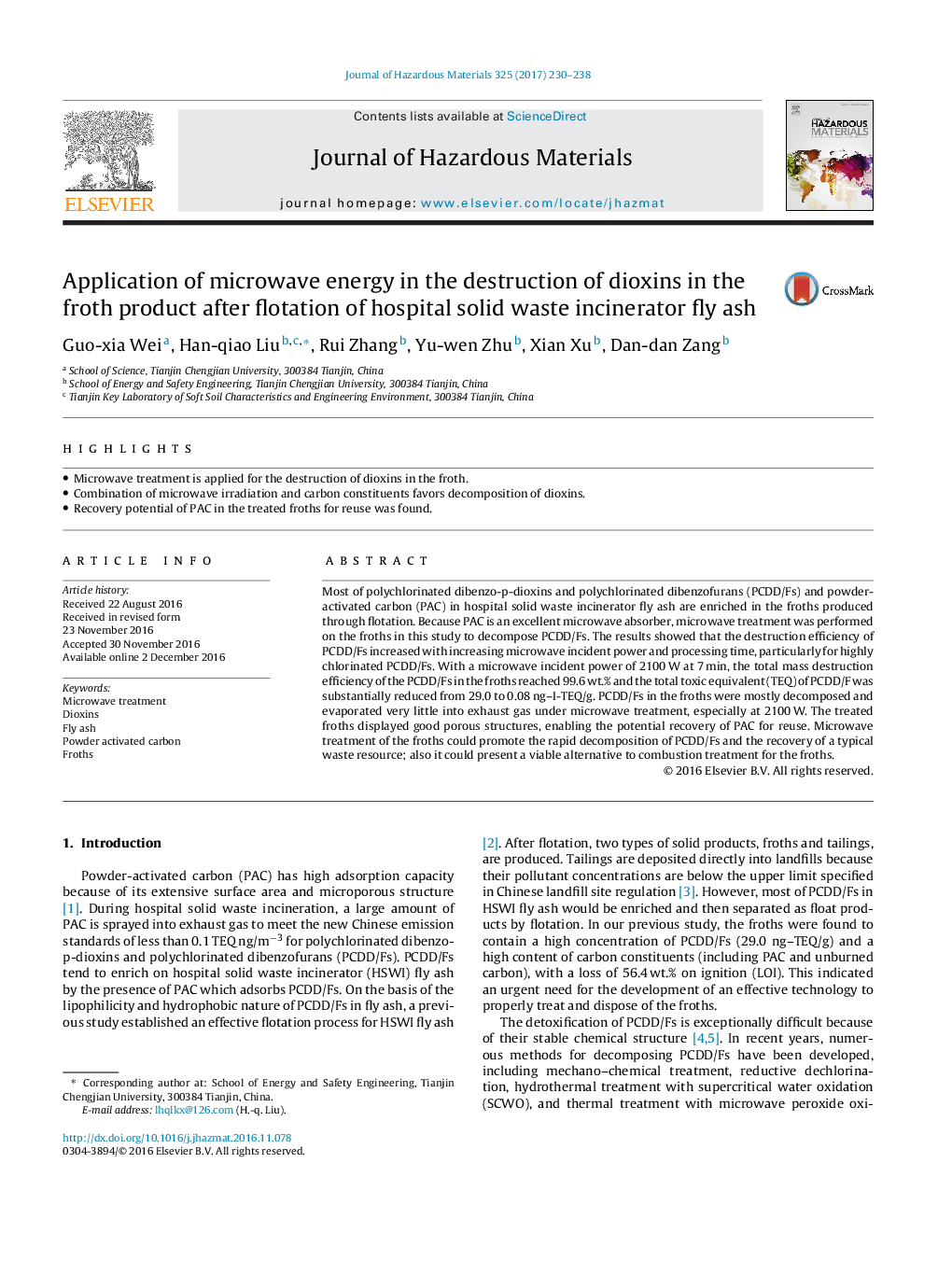| Article ID | Journal | Published Year | Pages | File Type |
|---|---|---|---|---|
| 4979736 | Journal of Hazardous Materials | 2017 | 9 Pages |
Abstract
Most of polychlorinated dibenzo-p-dioxins and polychlorinated dibenzofurans (PCDD/Fs) and powder-activated carbon (PAC) in hospital solid waste incinerator fly ash are enriched in the froths produced through flotation. Because PAC is an excellent microwave absorber, microwave treatment was performed on the froths in this study to decompose PCDD/Fs. The results showed that the destruction efficiency of PCDD/Fs increased with increasing microwave incident power and processing time, particularly for highly chlorinated PCDD/Fs. With a microwave incident power of 2100Â W at 7Â min, the total mass destruction efficiency of the PCDD/Fs in the froths reached 99.6Â wt.% and the total toxic equivalent (TEQ) of PCDD/F was substantially reduced from 29.0 to 0.08 ng-I-TEQ/g. PCDD/Fs in the froths were mostly decomposed and evaporated very little into exhaust gas under microwave treatment, especially at 2100Â W. The treated froths displayed good porous structures, enabling the potential recovery of PAC for reuse. Microwave treatment of the froths could promote the rapid decomposition of PCDD/Fs and the recovery of a typical waste resource; also it could present a viable alternative to combustion treatment for the froths.
Related Topics
Physical Sciences and Engineering
Chemical Engineering
Chemical Health and Safety
Authors
Guo-xia Wei, Han-qiao Liu, Rui Zhang, Yu-wen Zhu, Xian Xu, Dan-dan Zang,
